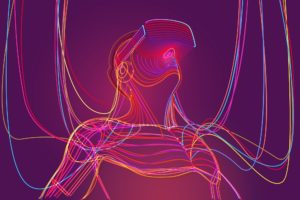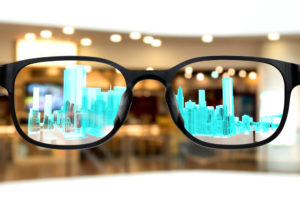
2020: The Year of the AI-Powered User Experience

(Andrush/Shutterstock)
Millions of companies around the world will compete this year to win more than $49 trillion in consumer spending. Having products and services that consumers desire certainly helps. But increasingly, the winning companies will be those who can deliver a superior user experience, and that means big data.
The analyst group Forrester detected a shift in consumer sentiment back in 2011, when it declared we were entering “the age of the consumer,” which is marked by the desire of consumers to be given the VIP treatment. Technology has improved substantially since then, both in user experience (UX) and artificial intelligence (AI), and we’re now at the point where consumers have certain expectations in terms of how both of those are used.
According to Splunk CTO Tim Tully, 2020 will be the year of the indulgent user experience. Those organizations that don’t abide by the shift, which is being driven in part by breakthroughs in virtual reality (VR) and augmented reality (AR) technologies, will be left wanting.
“Even as enterprise and industrial applications evolve, they’re not yet consumer-friendly enough for daily users,” Tully says. “Enterprise software companies who are still producing dull user experiences will find it harder to keep their users loyal, and will be even more vulnerable to disruption. When it comes to enterprise UX, the companies that will succeed are the visionaries that design software to make people’s entire experience better.”
Envisioning how customers will interact with data and applications in the future can give companies a jump on evolving consumer expectations. For Facebook CEO Mark Zuckerberg, it’s clear that an computing platform for the next decade will be AR glasses.
“The technology platform of the 2010s was the mobile phone,” Zuckerberg writes.” The platform of the 2000s before that was about the Web, and the 1990s was the desktop computer. Each computing platform becomes more ubiquitously accessible and natural for us to interact with. While I expect phones to still be our primary devices through most of this decade, at some point in the 2020s, we will get breakthrough augmented reality glasses that will redefine our relationship with technology.”
One frequent big data application is the personalized recommendation. But in 2020, companies will see to create hyper-personalized customer experiences, such as through the use of smart voice assistants, says Alexey Aylarov, the CEO of Voximplant.
“AI will play an integral role in a delivering superior customer experience in 2020,” Aylarov says. “In fact, 78% of brands say they have already implemented or are planning to implement AI and virtual reality by 2020 to better serve customers. AI and Automation (if done correctly) decreases the time customers spend trying to reach support or get answers to their questions. Businesses should understand that automation is not only about cost reduction; it’s also about being faster, smarter and offering a better customer experience.”
Many companies are trying to harness AI technology. But according to Lenovo‘s Christian Teismann, SVP of worldwide commercial business, those that figure out how to use AI to augment the customer experience will have a built-in advantage over their competitors.
“In 2020, businesses will bring AI to life to truly transform the customer and employee experience,” the computer maker says. “With AI technologies only getting smarter, companies will start to use AI to augment human intelligence. When employees are able to shift focus from tasks that once were mundane (e.g., scanning through company data), it will open the workforce across industries up to new opportunities.”
We all have unique interactions with companies, and realizing this is critical to understanding how technology can improve the customer experience. For TIBCO CTO Nelson Petracek, focusing on the customer journey will pay dividends.
“The optimization of the customer journey will continue to be important for organizations, but we will see growth in emerging technology areas which may be used to support this capability,” Petracek says. “The notion of a ‘digital twin’ for machines is not new, but applying this concept to people (customers, students, patients, etc.) will gain more traction. The ability to model a ‘person’ (a ‘virtual customer image,’ ‘virtual student image,’ etc.) and influence this model via a variety of inputs (e.g. IoT), knowledge of current state/time, emotion analysis/identification, and defined goals/outcomes will allow organizations to produce an experience that is much more timely, contextual, and relevant.”
Effective communication with customers is critical to business success. In the modern age, that means meeting customers on their preferred channels, typically Web and mobile, says James Brown, CEO of Smart Communications.
“Sixty-two percent of consumers will leave a company that isn’t delivering on their communications expectations,” Brown says. “This statistic is both sobering and exciting. Sobering, because it highlights the power today’s consumers have over the companies they do business with – but exciting because it also demonstrates the tremendous opportunity enterprises have to significantly impact the overall customer experience via the communications they deliver and, even more importantly, the conversations they are having with their customers.”
Technological advancement and fossil fuels have combined to increase the quality of life for billions of people around the world. Now technology is on the cusp of delivering the ultimate luxury UX: digital immortality, per Jans Aasman, CEO of Franz.
“We will see digital immortality emerge in 2020 in the form of AI digital personas for public figures,” Aasman says. “The combination of AI and semantic knowledge graphs will be used to transform the works of scientists, technologists, politicians, and scholars into an interactive response system that uses the person’s actual voice to answer questions. AI digital personas will dynamically link information from various sources – such as books, research papers and media interviews – and turn the disparate information into a knowledge system that people can interact with digitally. These AI digital personas could also be used while the person is still alive to broaden the accessibility of their expertise.”
Related Items:
Cloud Looms Large for Big Data in 2020


































